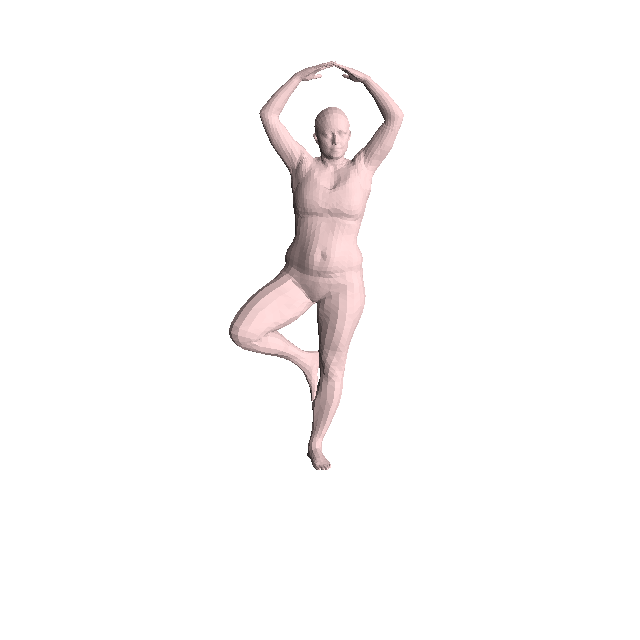Last experiments
Last suggestions
Instead of working by optimizing SDS Loss directly, the experiment consists of searching whereas we can use the transferred vertices to recover the ground truth functional map.
Let \(\mathcal{S}\) the input shapes, $ the template shape, \(C\) the functional map matrix. We suppose we are given a way to transfer the coordinates of \(S\), \(X_\mathcal{S}\), to \(X_{S \to T}\) using \(C\). The transfer function is denoted \(F(X_S, C)\).
We suppose we know \(X_{S \to T}^{\text{gt}} = F(X_S, C_{\text{gt}})\). Starting from a noisy \(C\), can we recover \(C_{\text{gt}}\) from \(X_{S \to T}^{\text{gt}}\), by minimizing the loss below ?
\[ || F(X_S, C) - X_{S \to T}^{\text{gt}} || ² \]
Experiments
Now, there a 3 different ways of transferring the data:
- “Matrix transfer”: \(F(X_S, C) = \phi_T C \phi_S^T X_S\) (transferring in Laplacian basis directly)
- “Distance transfer”: \(F(X_S, C) = \Pi_{S \to T}^C X_S\), where \(\Pi_{S \to T}^C (p, q) = Softmax(\delta_{pq})\), where \(\delta_{pq} = ||\Phi_T(q) - C\Phi_S(p)||²\)
- “Product transfer” \(F(X_S, C) = \Pi_{S \to T}^C X_S\) where now \(\delta_{pq} = \frac{\langle \Phi_T(q), C\Phi_S(p) \rangle}{|| \Phi_T(q)|| || C\Phi_S(p)||}\)
Input shape
The results are shown for the following input shape, but behavior is the same with other examples

Matrix transfer
From left to right: transferred vertices, texture map, map matrix (first 40 coordinates), distance to ground truth functional map.
Distance transfer
From left to right: transferred vertices, texture map, map matrix (first 40 coordinates), distance to ground truth functional map.
Product transfer
From left to right: transferred vertices, texture map, map matrix (first 40 coordinates), distance to ground truth functional map.
Adding a new term
We now add a new term to the loss we want to minimize. Given the transferred vertices \(X_{\mathcal{S} \to \mathcal{T}}\), we compute the point correspondance in the spatial coordinates (based on distances, which makes more sense). We then extract a functional map based on this correspondance, \(C_{\text{spatial}}\), and minimize:
\[ || C - C_{\text{spatial}}||^2 \]
Matrix transfer
From left to right: transferred vertices, texture map, map matrix (first 40 coordinates), distance to ground truth functional map.
Distance transfer
From left to right: transferred vertices, texture map, map matrix (first 40 coordinates), distance to ground truth functional map.
Product transfer
From left to right: transferred vertices, texture map, map matrix (first 40 coordinates), distance to ground truth functional map.